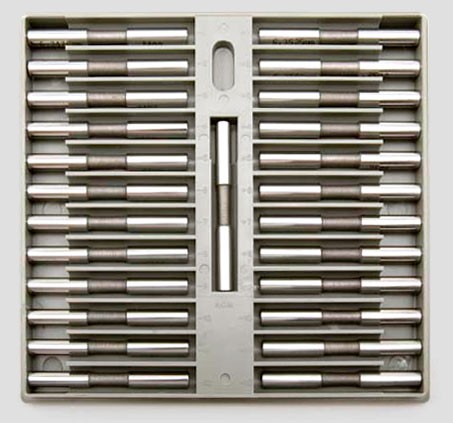I've just received Pelletgage in 5.5 few days ago.
Since I have some JSB Exact 15.89 pellets in 5.50, 5.51 and 5.52 I wanted to push them through Pelletgage just to see what exactly is in those few tins of pellets because I wanted to test different subcalibres and how barrel on HW100 would like them. 5.50 and 5.51 are my old stash, bought them probably 3 years ago, 5.52 are brand new.
Started with 5.50 (at least that what's printed on the sticker on the bottom of the tin) and got mostly 5.55! After some 20 pcs started checking if I'm reading the Pelletgage right but that is almost impossible to get wrong. Took some from the 5.52 tin and most really are 5.52. Tried some from 5.51 tin and those are actually 5.53!
Just for sanity check tried some other pellets that I have and most are what it says on the tin, or thereabout but it proves that everything's fine with the Pelletgage. I didn't doubt that in the first place but strange readings threw me of at start.
At least, these 5.50 are very, very consistent. From a small 250 PCS tin, I got 8 in 5.54 and 2 in 5.56, all other are 5.55
What's wrong with these pellets, I have no idea, AFAIK JSB doesn't even produce Exact's in 5.55, at least not on purpose

It was probably just a bad batch, old worn out die, some sort of a glitch in a production line but it just proves that for consistent and repeatable accuracy we have to check and double check everything.
If I would have tested these pellets without checking them first and found out that the barrel on HW100 really likes 5.50 I would probably order 5+ tins (500 PCS ones)
New pellets, presumably really in 5.50 would not shoot so great because there is quite a difference between 5.50 and 5.55. It all depends how pellet fussy the barrel is but difference could be obvious even on shorter ranges.
This is not a rant or anything, just wanted to share my experience in using one more tool that we have on our disposal.
This thing could be a clue for that "one magic tin" of pellets that outperformed any other a person ever shot. Maybe, maybe not, just too many variables

Happy shooting... sizing, lubing, weighing, tuning...




www.trrobb.com
